17+ SAMPLE Assurance Agreement
-
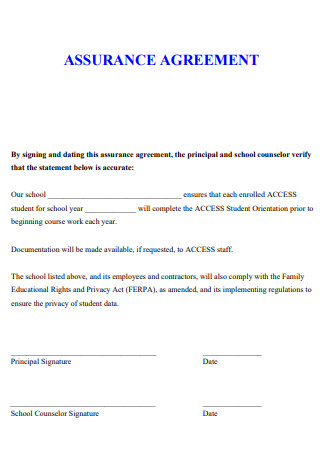
Assurance Agreement
download now -
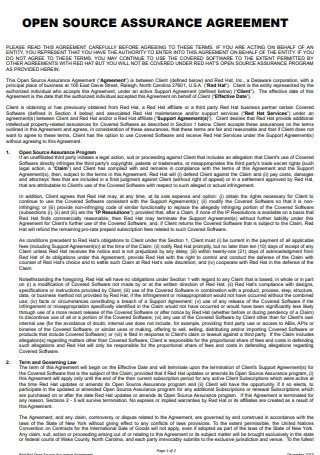
Open Source Assurance Agreement
download now -

Data Assurance Agreement
download now -
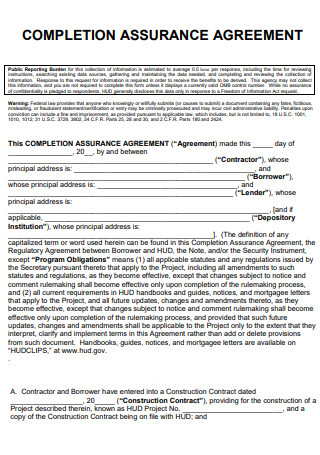
Completion Assurance Agreement
download now -
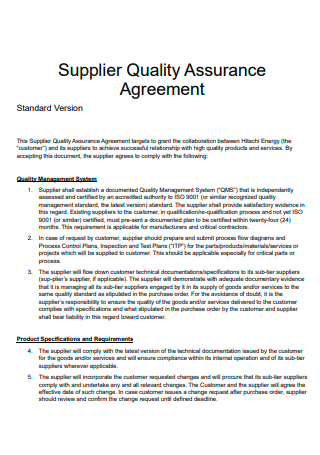
Supplier Quality Assurance Agreement
download now -
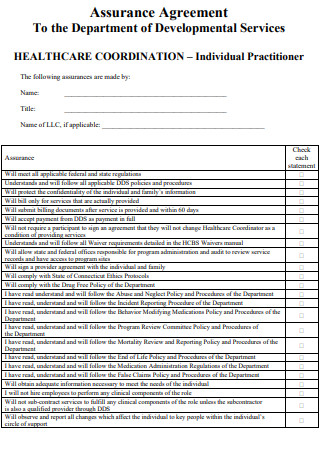
Individual Practitioner Assurance Agreement
download now -
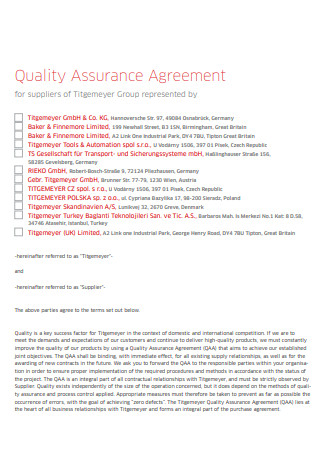
Quality Assurance Agreement
download now -
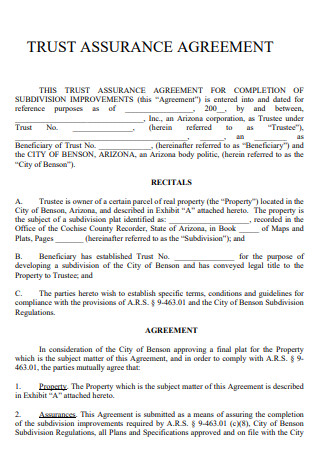
Trust Assurance Agreement
download now -

Environmental Assurance Agreement
download now -

Assurance Participation Agreement
download now -

Non-Funded Assurance Agreement
download now -
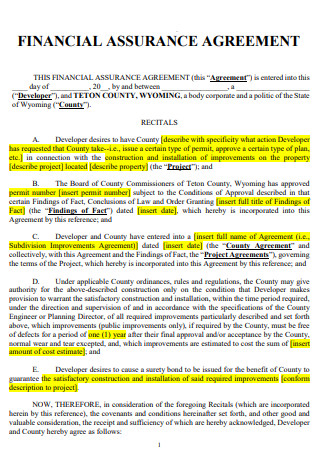
Financial Assurance Agreement
download now -
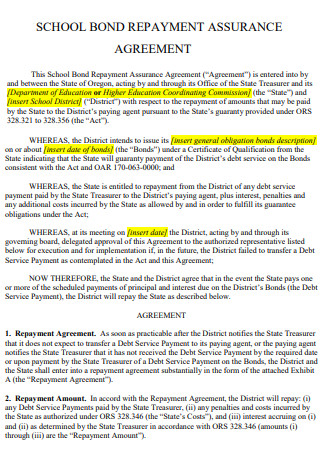
Repayment Assurance Agreement
download now -
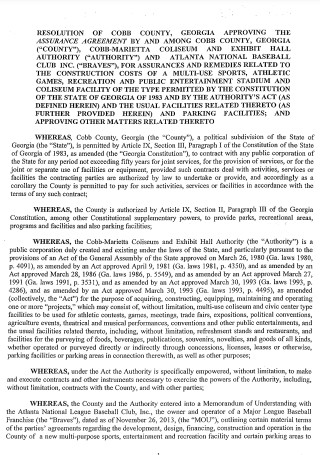
Resolution for Assurance Agreement
download now -
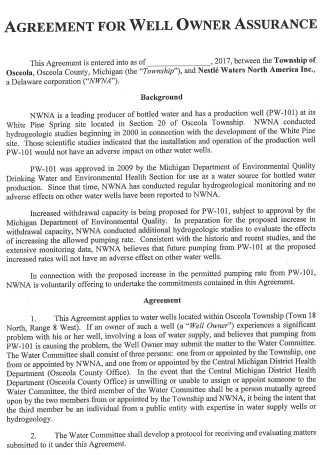
Owner Assurance Agreement
download now -
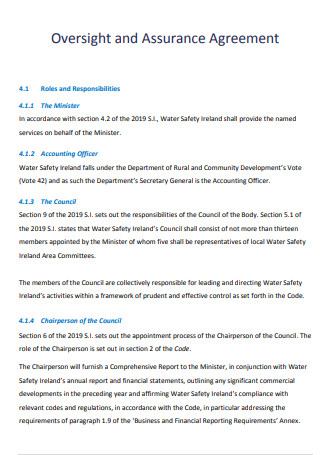
Oversight and Assurance Agreement
download now -
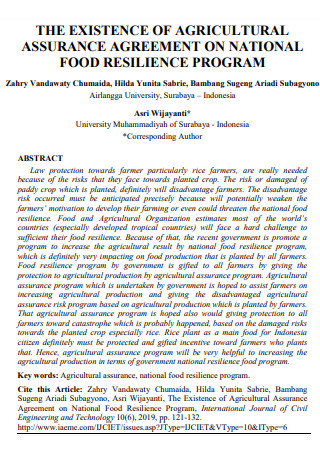
Agriculture Assurance Agreement
download now -
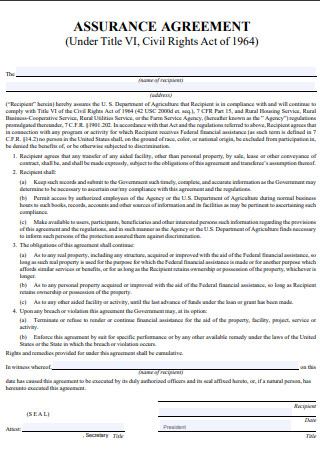
Assurance Agreement Form
download now
FREE Assurance Agreement s to Download
17+ SAMPLE Assurance Agreement
What Is an Assurance Agreement?
Elements of an Assurance Agreement
Steps in Writing an Assurance Agreement
FAQs
What is the purpose of having an assurance agreement?
Is an agreement considered a legal document?
What are some of the most effective application tools for assurance agreements?
What Is an Assurance Agreement?
Assurance agreements are written agreements between two or more parties that express the parties’ mutual agreement on a certain topic. Those who participate in quality management include entities such as human resources or people, suppliers, and manufacturing departments, among other things. It is the purpose of this agreement to clearly explain and plainly state the responsibilities of each party in order for the constituents to have a better understanding of the scope and delimitation of what they are expected to perform for the project at hand. As a result, the assurance agreement is a legally binding contract that can be used to hold signatories accountable in the event of a sudden withdrawal, failure to complete their planned tasks, or failure to adhere to the stated consensus written in the file.
You can find additional templates on our website anytime you need them. You can use these templates to create a quality assurance agreement; a security bid proposal; a quality control agreement; club strategic plans; quality assurance statements; quality control contracts; customer invoices; and payment invoices; among others. Besides providing you with templates, this post also contains vital information that will help you finish your template.
Elements of an Assurance Agreement
Given the quick summary of what an assurance agreement is, the essence of the agreement has already been given out for the readers to understand. However, due to the amount of legal significance that the agreement possesses, as well as the nature of the parties’ transactional connection, it is necessary to deconstruct the most relevant sections of the instrument. It is beneficial to learn about and become familiar with the content of an assurance agreement so that you can foresee your future responsibilities as well as the critical considerations you should make if you decide to sign such a document.
Steps in Writing an Assurance Agreement
The assurance agreement is one of the most significant fundamental contracts that must be completed before an assurance test can be carried out. It is on a level with product test plans, which are sketches of the process of execution in and of themselves, rather than the product itself. The former is concerned with the actors involved in the assurance test in great detail, whereas the latter is concerned with the dynamics of the test. Still, the most crucial, and possibly the most significant, aspect of the subject at hand is, of course, the test itself, which is why you should become familiar with the procedures that must be followed in order to administer one.
-
Step 1: Implement Quality Management Software.
During the course of a project’s execution, software tools are extremely vital and beneficial. While your program, for example, is being launched, it assists you in maintaining organization and your teams in sync with one another. Prepare a solid and reliable quality management software before conducting your quality assurance test. This is the first step you can take to ensure that your quality assurance test is successful. Quality management software is also often effective in the field of risk management. You should also see our strategy action plan.
-
Step 2: Keep an Eye on Things.
When the test begins, it is critical for you and the various teams that you may be working with to pay attention to the nature of the product as it is being used. You will be able to identify any glitches or flaws that need to be addressed in post-production. In order to disseminate the information to the team responsible for processing that particular compartment of the project, you may want to make notes about your observations during this time period. Consider writing down any positive aspects of the product you notice, such as the smoothness of the manufacturing process, the safety, and the durability of the product, so that you can remember the things that were successfully produced for the project. You should also see our quality control plan.
-
Step 3: Provide Feedback
Perhaps you will have acting clients who will use the product first in order for external parties to measure the promised purpose of your asset, or you may have a set of professional teams who will provide feedback on the product’s performance during its initial run. Because the success of your product is largely dependent on the acceptance of consumers, you can gain valuable information and suggestions for improvement from third parties throughout the Feedback process. Additionally, post-surveys may be beneficial in order to obtain a more tangible and quantitative outcome. You should also see our quality assurance business plan.
-
Step 4: Make Any Necessary Revisions.
When discussing assurance, it is impossible to avoid bringing it up in relation to the need to constantly change the product in order to fulfill customer expectations. The entire purpose of quality assurance is to determine whether or not something is already good enough to be released into the marketplace. A revision may occur on a large or small scale, for example, it could include altering a few lines of code in your software to correct an error, or it could entail investing in additional employees or production procedures. You should also see our quality strategic plan.
-
Step 5: Examining the Outcomes
Once your product is officially available for purchase, you can begin evaluating its performance. In your test plan, goal-setting is probably one of the first concepts you write down, and in this stage, you can compare real-world data to your primary objectives. The fact that your expectations are based on the nature of your product, on the other hand, increases the likelihood that you will later discover that your expectations were incorrect, as new information and insights are gained as a result of the product becoming a part of people’s lived experiences. Finally, the success of the product is still determined and judged by you at the conclusion of the process.
FAQs
What is the purpose of having an assurance agreement?
It is critical to have one because it legally binds the parties to the agreement they have reached on responsibilities, tasks, and supplies, and it assures that all of them are able to complete the transaction they agreed to. With the quality assurance agreement in place, it is also much easier to hold them accountable if things take an unforeseen turn for the worst.
Is an agreement considered a legal document?
Yes. In assurance, it is used to establish a contractual relationship between the parties involved, and signing it indicates that the parties are involving the law in their transaction.
What are some of the most effective application tools for assurance agreements?
Software, without a doubt, makes our duties a lot easier to do and our findings much more dependable. Zephyr Scale, TestCollab, Quality, and PractiTest are just a few of the excellent application solutions available for quality assurance.
The assurance agreement increases the marketability and enticingness of your goods, which means that the investments you make in the background are more than justifiable. Making good and extensive quality assurance agreements is in your best interest because it will help you manage the quality of your product better. Part of the quality management of a product is the connections you build while putting together a team to serve as the project’s pillars. When you have an assurance agreement, all parties are obligated to uphold their respective responsibilities and pledges, but you also have a safety net in case things go awry because the agreement has significant legal weight. To summarize, the assurance agreement is a strategic safety net that you should have in place in order to ensure a bright future for the investments that you have already made.
